Photo

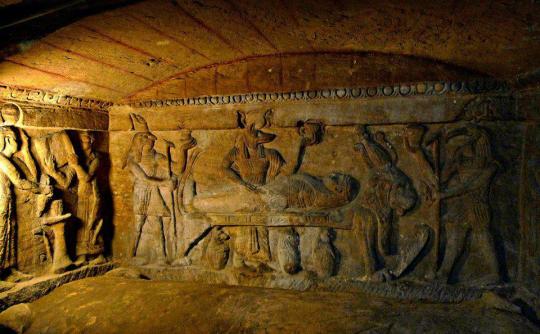
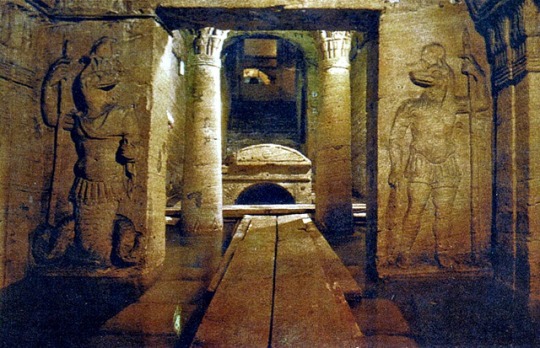
The catacombs of Kom el Shoqafa (meaning “Mound of Shards”) is a historical archaeological site located in Alexandria, Egypt and is considered one of the Seven Wonders of the Middle Ages.
The necropolis consists of a series of Alexandrian tombs, statues and archaeological objects of the Pharaonic funeral cult with Hellenistic and early Imperial Roman influences. Due to the time period, many of the features of the catacombs merge Roman, Greek and Egyptian cultural points; some statues are Egyptian in style, yet bear Roman clothes and hair style. A circular staircase, which was often used to transport deceased bodies down the middle of it, leads down into the tombs that were tunneled into the bedrock during the age of the Antonine emperors (2nd century AD). The facility was then used as a burial chamber from the 2nd century to the 4th century, before being rediscovered in 1900 when a donkey accidentally fell into the access shaft.
It is believed that the catacombs were only intended for a single family, but it is unclear why the site was expanded in order to house numerous other individuals.
2K notes
·
View notes
Text
"The country's ancient rulers are referred to today as "pharaohs," although in ancient times they each used a series of names as part of a royal titular, wrote Ronald Leprohon, a professor emeritus of Egyptology at the University of Toronto, in his book "The Great Name: Ancient Egyptian Royal Titulary" (Society of Biblical Literature, 2013). The word pharaoh originates from the Egyptian term "per-aa," which means "the Great House," Leprohon wrote. The term was first incorporated into a royal title during the rule of Thutmose III (reign circa. 1479 to 1425 B.C.), Leprohon wrote."
3 notes
·
View notes
Text
“No human endeavor has been more associated with mystery than the huge, ancient lion that has a human head and is seemingly resting on the rocky plateau a stroll from the great pyramids. Fortunately for Lehner, it wasn’t just a metaphor that the Sphinx is a riddle. Little was known for certain about who erected it or when, what it represented and precisely how it related to the pharaonic monuments nearby. So Lehner settled in, working for five years out of a makeshift office between the Sphinx’s colossal paws, subsisting on Nescafé and cheese sandwiches while he examined every square inch of the structure. He remembers “climbing all over the Sphinx like the Lilliputians on Gulliver, and mapping it stone by stone.” The result was a uniquely detailed picture of the statue’s worn, patched surface, which had been subjected to at least five major restoration efforts since 1,400 B.C. The research earned him a doctorate in Egyptology at Yale.”
3 notes
·
View notes
Text
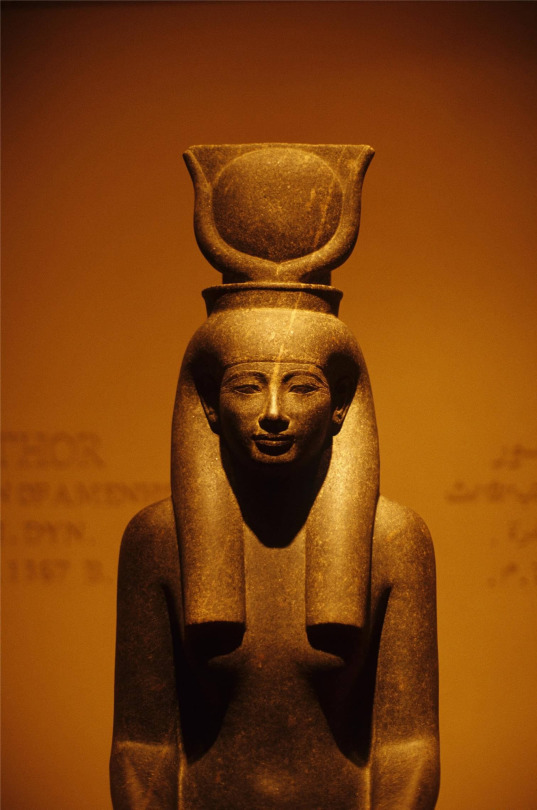
Life size seated statue of the goddess Hathor, depicted with cow horns and solar disk. Now in the Luxor Museum.
29 notes
·
View notes
Text
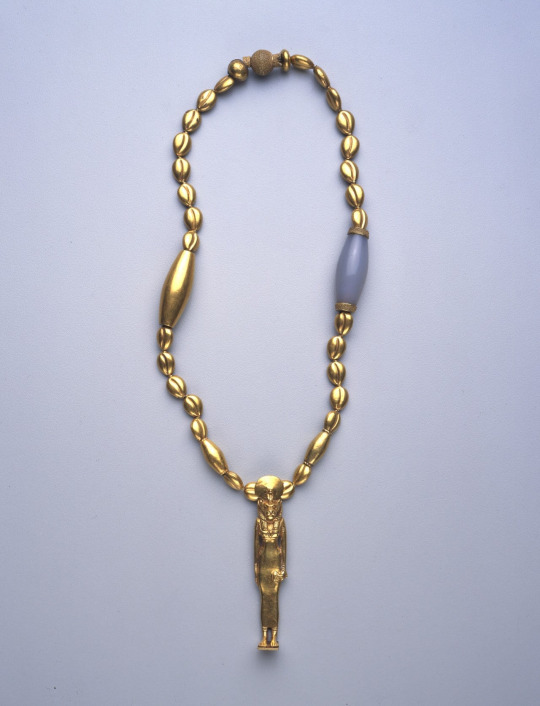
Gold and Chalcedony Sekhmet Necklace
This string of 30 gold cowrie shell-shaped beads, one gold pomegranate shaped bead with granulation, and two large barrel-shaped beads, one gold and one chalcedony. Cast gold pendant shows the goddess Sekhmet standing with her hands at her sides.
Late Period, 27th Dynasty, around 500 BC.
Now in the Penn Museum. 29-70-19
67 notes
·
View notes
Text

Nebamun, hunting in the marshes (detail)
New Kingdom, 18th Dynasty, c. 1350 B.C.
Tomb of Nebamun, Thebes.
British Museum. EA37977
41 notes
·
View notes
Text

Vignette from Book of the Dead of Maiherpri
New Kingdom, 18th Dynasty, ca. 1479-1425 BC. From Tomb of Maiherpri (KV36), Valley of the Kings. Now in the Egyptian Museum, Cairo. JE 3384
19 notes
·
View notes
Text
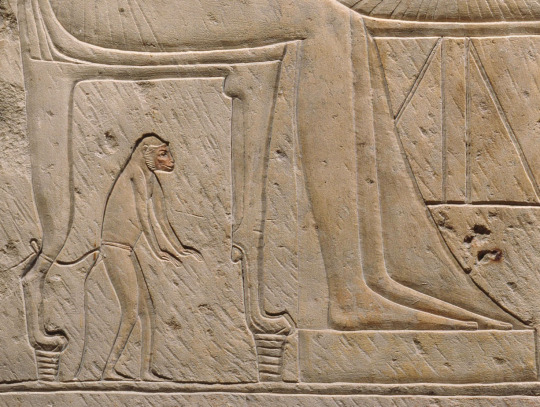
A pet monkey under the chair of Maia, wife of the dignitary Rij, as seen upon the north-wall of the antechapel within Rij's tomb
New Kingdom, Late 18th Dynasty-Early 19th Dynasty, c. 1550–1186 B.C.
Tomb of Rij, Saqqara.
Now at Neues Museum, Berlin. ÄM 7278
3 notes
·
View notes
Text
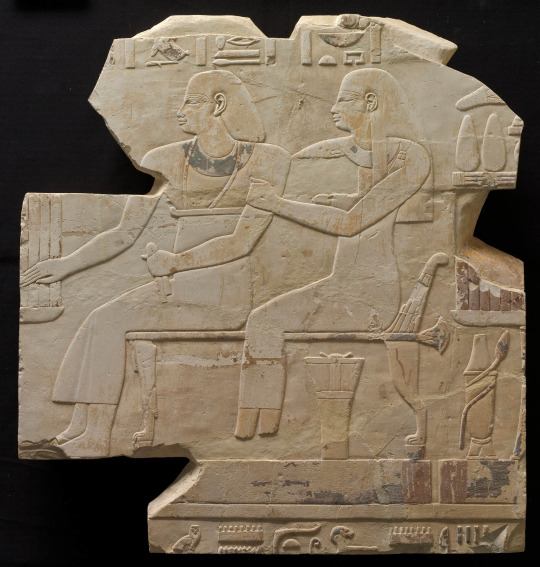
Seated Couple: Mentuemhat's Ancestors
Late Period, 26th Dynasty, ca. 664-525 BC.
Tomb of Mentuemhat (TT34), El-Assasif, Thebes.
Now in the Cleveland Museum of Art. 1949.493
A deceased vizier, whose name ended in Nufer, and his wife seated before a table of offerings. Presumably they were relatives of Mentuemhat. The work is in the style of early 18th Dynasty.
Mentuemhet is one of the most recognizable nonroyal names from ancient Egypt. He was a rich and powerful mayor and priest of Thebes and Governor of Upper Egypt who rebuilt the city after the Assyrians destroyed it.
1 note
·
View note
Text

Stone sarcophagus within the Tomb of Merenptah (KV8), fourth king of the 19th Dynasty and son of Ramesses II.
Merenptah became king when he was approximately 70 years of age, outliving his older brothers. He reigned for 10 years and died in 1203 B.C.
#Merenptah#ancient egypt#kemet#kemetic#egypt#egyptian art#pharaoh#egyptology#pharaonic#19th dynasty of Ancient Egypt
4 notes
·
View notes
Text









Dua Bast! Dua Bastet!

308 notes
·
View notes
Text
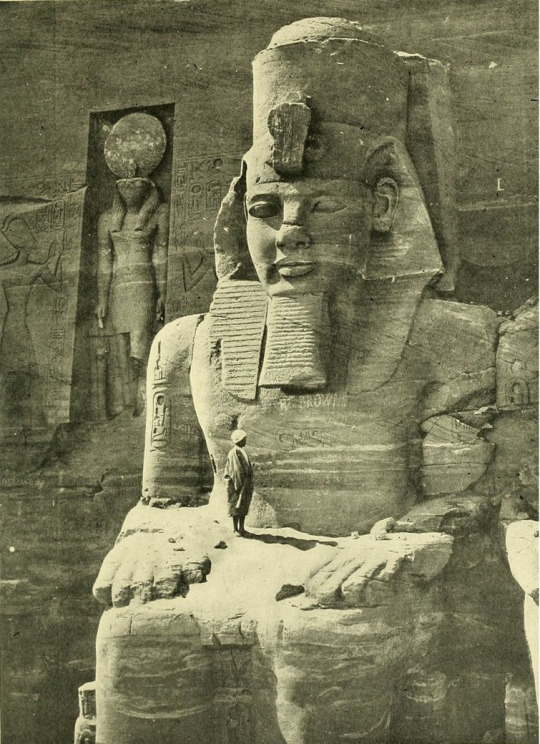
A man chilling in Ramses II's lap,
Abu Simbel, Egypt
1911
731 notes
·
View notes
Text
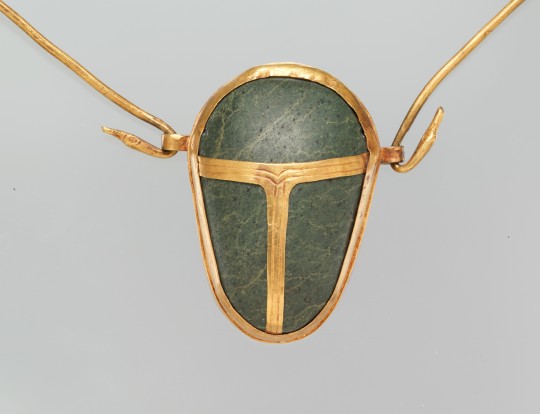
Ancient Egyptian heart amulet (gold and green schist) of one Manhata. Artist unknown; ca. 1479-1425 BCE (reign of Thutmose III, 18th Dynasty, New Kingdom). From the Tomb of the Three Foreign Wives of Thutmose III at Wadi Gabbanat el-Qurud, Thebes; now in the Metropolitan Museum of Art.
#art#art history#ancient art#egypt#ancient egypt#egyptian art#ancient egyptian art#egyptian religion#ancient egyptian religion#kemetic
684 notes
·
View notes
Text


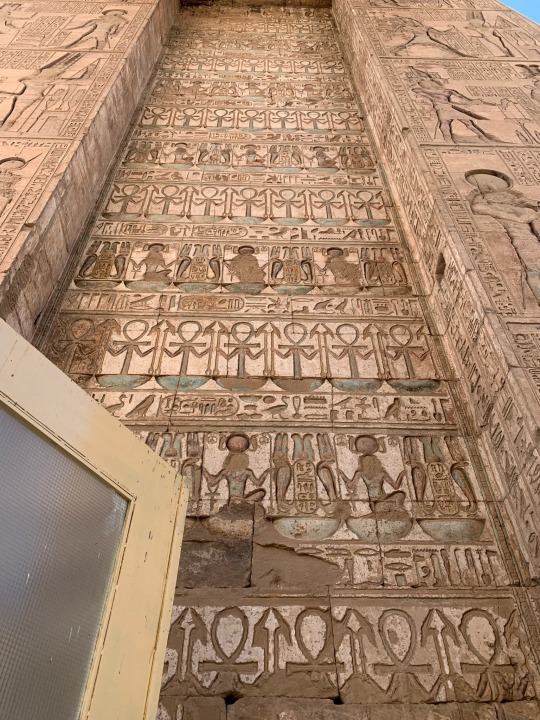


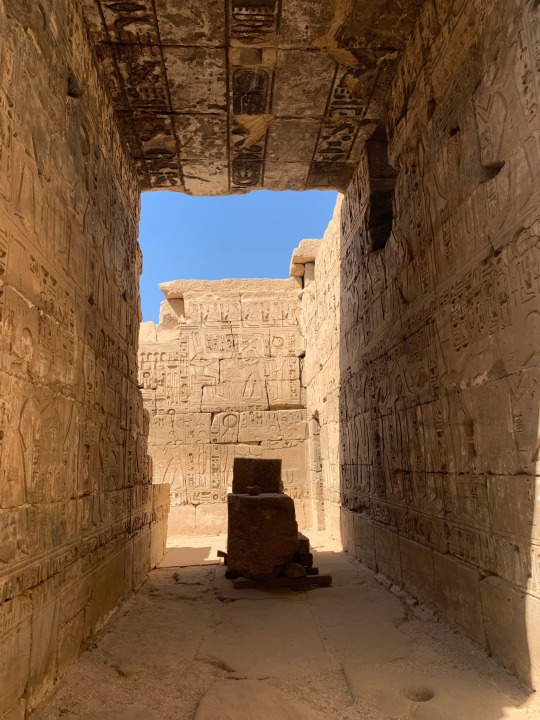



Imagery from Khonsu’s Temple within the Karnak Temple Complex in Luxor, Thebes.
The Karnak complex is massive and it’s temples ornately decorated despite their age. I took these photos near the end of July—it was over 45 degrees celsius, so there were few people there. The experience, especially because of the lack of people, was richly unique and beneficial to the soul.
#ancient egypt#kemet#khonsu#egyptian mythology#ancient history#egyptian hieroglyphs#egyptian gods#egyptian art#egyptology#kemetic
931 notes
·
View notes
Text
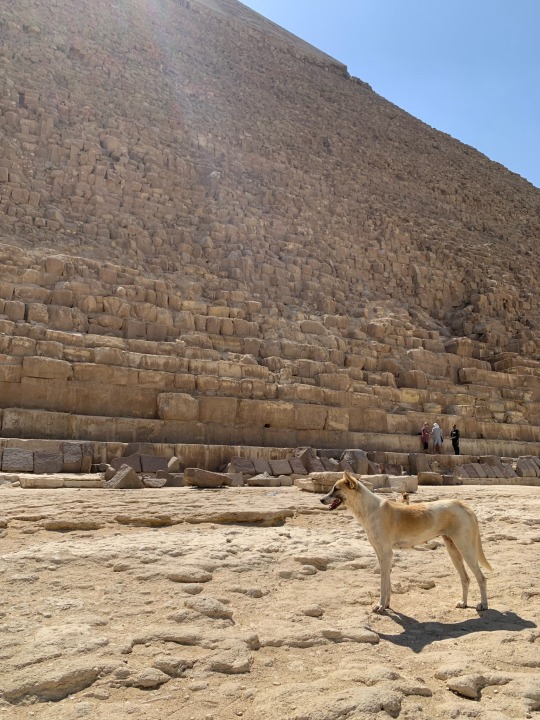
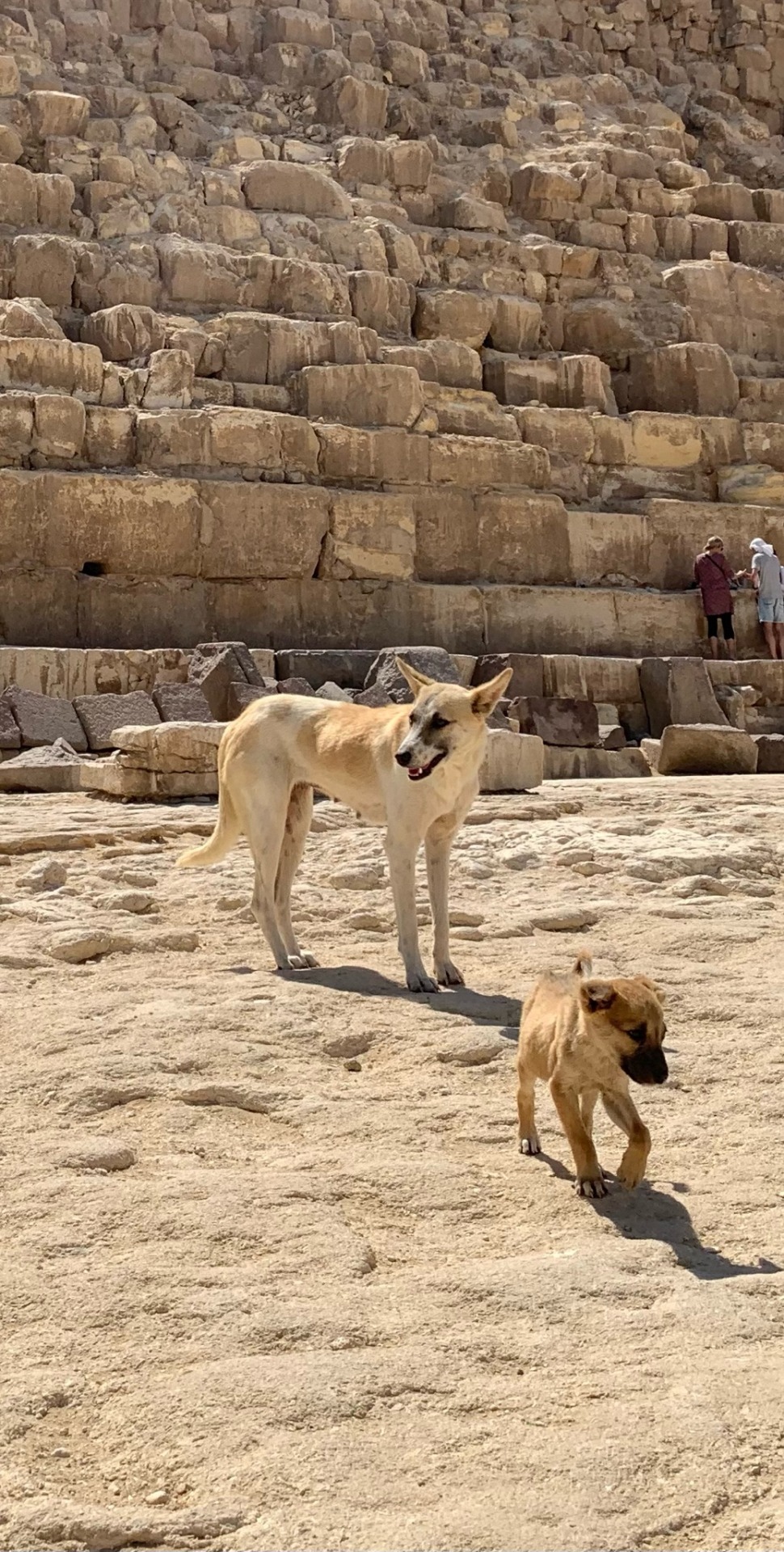





More doggos at the Pyramid of Khafre.
755 notes
·
View notes
Text
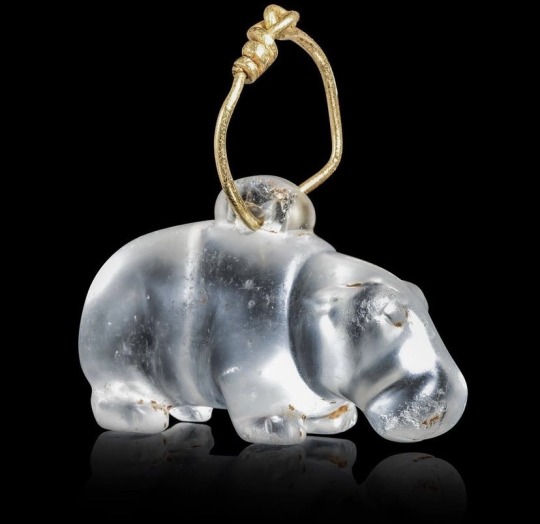
An Egyptian rock crystal of a chonky hinpopotamus amulet
(Middle Kingdom, ca. 2050-1650 BCE)
Amulets were worn by ancient Egyptians for their protective and regenative properties. Used in both in daily life and during funerary rites, amulets represented animals, deities, symbols or objects thought to possess the magical powers of warding off evil spirits.
As animals were popular representations, the hippopotamus was known for its apotropaic (e.g. ability to avert bad luck) qualities and was associated with rebirth.
#art#archaeology#sculpture#ancient#ancient art#ancient egypt#amulet#hippopotamus#apotropaic#egyptian art
3K notes
·
View notes
